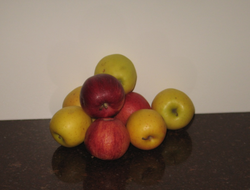The Glycemic Index: the highs and lows of carbohydrate consumption
Published: June 04, 2021
In the seemingly never ending quest to find the "perfect" weight loss and weight maintenance diet, the glycemic index (GI) has been touted as an effective tool to obtain weight loss goals.
However, the concept of the GI can be misinterpreted which has resulted in many nutritious foods being relegated to the list of "bad" foods: foods to be avoided at all costs.
When the GI is misinterpreted foods with a high GI rating are considered "bad" and those with a low to medium GI rating are "good" or "good carbs" and "bad carbs" since the GI is concerned with carbohydrates.
Carbohydrate containing foods such as carrots, potatoes and bananas, staples in the diets of many populations for centuries, suddenly become "bad" for you.
What is the Glycemic Index?
The Glycemic Index of foods ranks foods according to their immediate effect on blood-glucose levels and is only applied to foods which contain carbohydrate.
Development of the GI (1981) was the result of research concerning blood-glucose control in people with diabetes.
The glycemic response refers to:
- the rate of absorption of glucose after a person has consumed glucose containing food
- how high blood-glucose levels rise
- the speed at which blood-glucose levels return to normal.
Knowing which foods have a significant effect on blood-glucose levels can help people with diabetes control their blood-glucose levels.
If you are confused by the good carb/bad carb designations read on and find out about the GI, what it is, and how it translates into healthy eating for you...link to the full article to learn more.
References
1.
Miller et al. (1996). The GI Factor: The health breakthrough for blood sugar control, weight loss, reducing the risk of heart disease.
2.
Whitney, E. & Rady Rolfes, S. (2005). Understanding Nutrition. Belmont, CA: Thomson Wadsworth
3.
Mann. K. & Escott-Stump, S. (Eds.)(2004). Krause's Food, Nutrition & Diet Therapy. (11th Ed.) Elsevier

